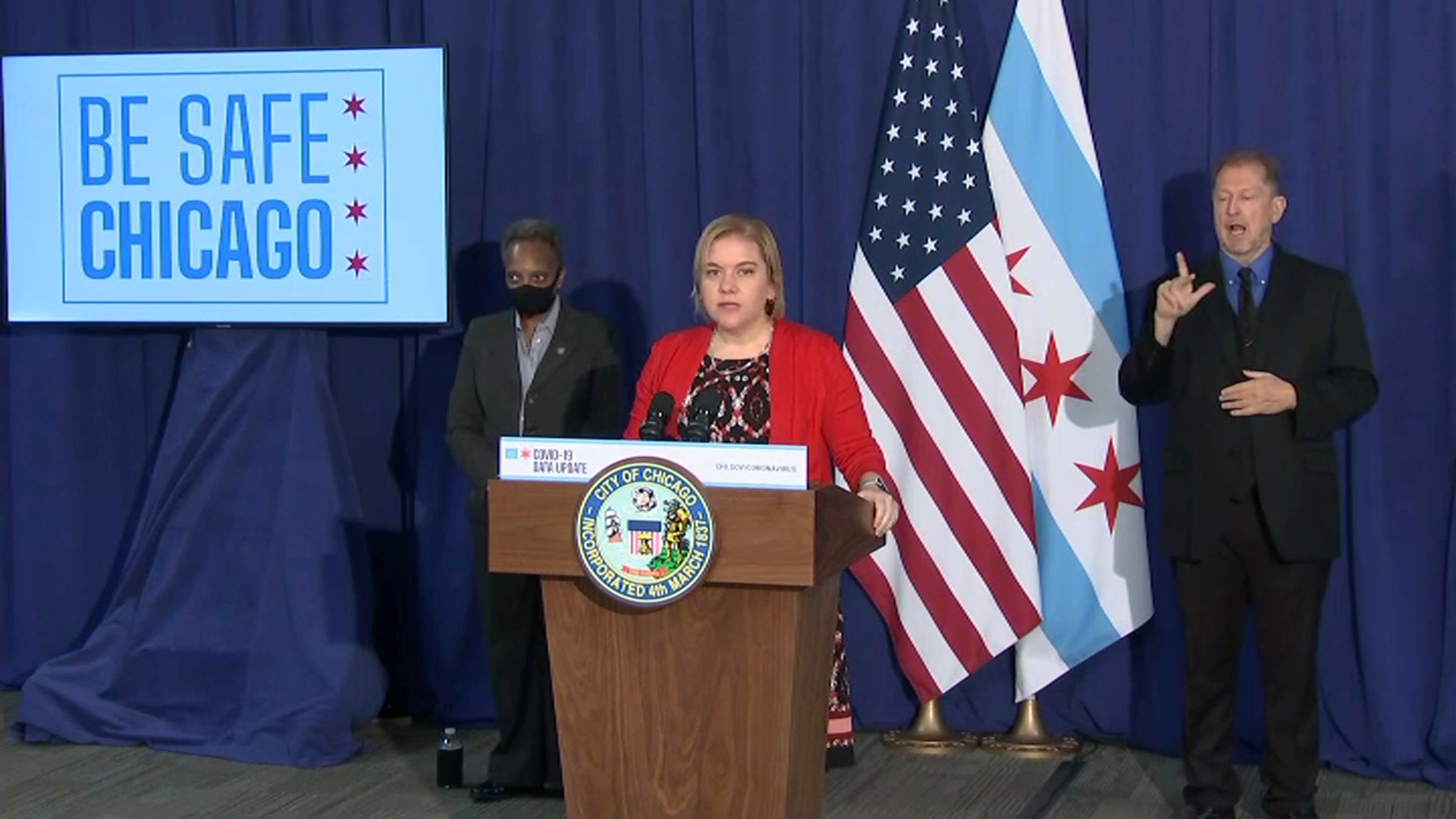Chicago's mayor warned Monday that some phase three restrictions could be brought back as the city enters what she said was a "second surge" of coronavirus.
But what would that look like?
"To further fight the spread of COVID-19, the city is considering additional measures in the coming days, including bringing back restrictions on businesses," a release from the mayor's office read Monday.
In a press conference to "sound the alarm," Chicago's top doctor said the city won't wait until the state-mandated 8% positivity threshold to increase restrictions.
Both Lightfoot and Chicago Department of Public Health Commissioner Dr. Allison Arwady declined to specify which restrictions would be among those brought back.
"We will be looking to, you know, make decisions about what needs to happen in the publicly regulated spaces, but the most important thing is people's behavior in their own homes and with those they love," Arwady said.
Lightfoot warned that if the numbers continue rising, the city could see returns to phase three restrictions.
"We will not hesitate to take the steps to save our city and save our residents," she said.
Chicago first entered phase three in early June, allowing several city businesses to reopen following stay-at-home restrictions, but with capacity limits and new guidelines.
One of the most notable differences between phase three and phase four, which Chicago has been in since late June, is limitations for restaurants and bars. When the city entered phase three on June 3, those establishments could only operate for outdoor service, a concern as many restaurants close across the city and others fear what will happen as colder weather moves in.
The city has been in phase four of its reopening plan since June 26.
Then on July 24, city officials changed course to shut down indoor bar service, reduce capacity limits at fitness classes and heighten other restrictions as the city continued to see an increase in its average number of daily new cases.
Lightfoot and Arwady last month announced that the city would ease some of the restrictions put in place to slow the spread of the coronavirus during phase four, allowing indoor bar service again and raising capacity limits on businesses, including restaurants, among other major changes.
The changes that took effect on Oct. 1 included increasing indoor capacity at restaurants, health and fitness centers, personal services, non-essential retail and all other establishments from 25% to 40%.
Bars, breweries, taverns and other businesses that serve alcohol without a food license could also open indoor seating - shut down since late July - at 25% capacity up to 50 people, officials said.
Currently, Chicago is reporting an average of more than 500 new coronavirus cases daily, the "highest daily rate since the tail end of the first surge at the end of May," officials said.
As of Monday, Chicago was seeing a seven-day rolling average of 508 new cases per day, according to the city's coronavirus data dashboard. That marks a significant increase from the roughly 300 new cases per day rolling average the city was seeing just three weeks earlier when restrictions were eased.
The numbers also coincide with a 25% increase in non-ICU COVID-19 hospitalizations since Sept. 22, according to city data.
"This is the second surge that Dr. Fauci and Dr. Arwady have been warning about since March," Lightfoot said. "And we are now in it."
She said while the surge is not surprising, she attributed it largely to the fact that "COVID thrives in enclosed spaces."
"We've been talking about these kinds of risks now from the very beginning," she said.
On Monday, Chicago was listed in a yellow cautionary phase, which means the city must "pause and monitor." If the city reaches a red warning phase, that could signal the start of rollbacks.
"Right now, we are actually still in the phase where we are in yellow - pause and monitor - because this increase has been so fast," Arwady said. "Technically, we're still at not quite 14 days of seeing this increase. Because of the way we count, there can be slight delays in terms of when numbers come in. But with the way the numbers are looking later this week, we are absolutely going to be in red for cases with a sustained increase more than 14 days. We're seeing some increase in hospitalizations, not yet in deaths or emergency department visits. But regardless, this has me and it should have you very concerned."
For the city to reach a red warning, the following metrics would need to be met:
- Any sustained increase in cases, hospitalizations, deaths and emergency room visits for at least 14 days
- Seven-day rolling positivity rate at or greater than 10%
- Hospitalization capacity of:
- >1280 non-ICU beds
- >480 ICU beds
- >360 ventilators
- Unexplained decline in testing, with less than 4,500 tests per day under a seven-day rolling average
Monday's update comes just days after Arwady said in a news conference on Thursday that it was "not a good week for COVID" in Chicago - a claim she reiterated Monday.
“I’m deeply concerned about these trends and worried that we’ve got some COVID fatigue setting in where people are not following the public health guidance as they should," Arwady said. "This virus doesn’t care who you are, it’s just looking to spread, and if we give it the opportunity to do so it will. Most troubling is the fact that COVID-19 continues to have a disproportionate impact on Black and Latinx individuals, and those with under-lying medical conditions. But we’re seeing a rise in cases across the city and across all races and ethnicities, so we all need to re-dedicate ourselves to combatting this epidemic.”





